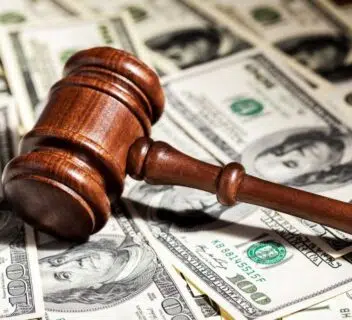Victim Impact Statement Example
Questions and topics this article can help to answer: What is a victim impact statement? | How to write a victim impact statement | Do’s and don’ts of writing a victim impact statement for a car accident | Example of a victim impact statement | Why write a victim impact statement?
What Is a Victim Impact Statement?
A victim impact statement is a personally written account of how the car accident affected you. Many times, a serious car accident can have long-standing consequences. It’s an opportunity for a victim to explain the full extent the car accident may have had. For example, a police report may mention that the victim had a broken leg.
But, what might not be mentioned is the other consequences, like:
- Time off of work
- Hospital bills
- Cost and time of physiotherapy appointments
- Canceled vacations or plans
- Stress, anxiety, or depression when it comes to driving
- The impact of the injuries and accident on friends and family
Your victim statement is a comprehensive overview of how the individual’s life has changed due to the car accident.
What Are Victim Impact Statements For?
Victim impact statements give you – the victim – a voice. They serve as evidence and help to build a case against the defendant who wronged you.
Are Victim Impact Statements Used in Court?
Yes. Victim impact statements can be used to prove your case and demonstrate the impact the accident had on you. They can help to persuade a jury to understand why you’re claiming the damages you seek, and why you deserve this compensation.
Avoid Exaggerating the Details
We’ll cover the do’s and don’ts of powerful victim impact statements below. However, this is a point worth highlighting: you should never exaggerate details in a statement. Stick to how you truly feel and what you remember.
Even if you can’t recall too many details, that’s ok. Just be clear and focus on your true feelings. And if you felt numb or you’re unsure how much the accident affected you, this is ok to say, too.
Never take the chance of lying or exaggerating in a document which could be used in court.
How to Write a Victim Impact Statement
Before we look at a phrasing sample, or victim impact statement example, here are some points to bear in mind.
- Victim impact statements should be in your own words.
- Focus on the impact of the incident on your life. You don’t need to describe the accident in detail – that’s not what the statement is for.
- Clearly set out the physical, mental, emotional, and financial impacts one at a time.
Remember, this is your statement. Your opportunity to explain how your life has been affected by an incident which was not your fault. Take your time over the statement and be as detailed as you can.
Examples of How to Structure a Victim Impact Statement
How do you put all of this information into a statement? It might seem overwhelming at first, but here are the steps to walk through.
Start with the emotional impact
Transition into your physical injuries and disabilities
Emphasize the financial consequences
Start With the Emotional Impact
You can discuss how you felt that day and how you feel now. You were probably scared and shocked on the day and might still feel anger and fear today. Describe these emotions in as much detail as you can, so the jury can understand just how emotionally traumatizing the car accident was.
Transition Into Your Physical Injuries and Disabilities
After covering the emotions, you can transition into your physical injuries and disabilities. You’ll want to cover how much these injuries hurt, how long and challenging recovery has been, if recovery made you take time off work, time lost with family, friends, hobbies, and other consequences.
You may want to wrap this up in a personal story. Some common examples are having to cancel a booked and paid vacation because you were recovering. Or, having to become a burden and reliant on your family members during recovery, which impacted them as much as you. You need to go over these details, so the jury understands the full consequences of your injuries.
Emphasize the Financial Consequences
Lastly, you’ll want to emphasize the financial consequences. This will help the jury decide the amount of accident compensation you and your family may deserve. You can cover how much this accident cost you in terms of:
- Healthcare and recovery costs
- Wages lost at work
- and more
Powerful Impact Statement Example
Want to see an example of a successful victim impact statement? Let’s now look at a victim impact statement example and what we can learn from it.
Your Honor,
On August 25, 2022, at the intersection of Fir Street and 96th Avenue in San Diego, California, I was in a car accident with Mr. Jones. The accident happened at approximately 2:00 in the afternoon. My car was totaled as a result of the accident and I walked away with a broken arm.
The victim quickly summarizes what happened, confirming the date and time of the accident and the pertinent details.
That day, I had left work for a brief period to go to a routine doctor’s appointment. It was easily the most shocking and traumatizing experience of my life having a car ram into the side of my driver’s door.
The victim emphasizes how shocked and traumatized they felt at the time (the emotional impact).
I couldn’t get out of the car and I sat there shocked with my arm pinned under the wheel. The paramedics arrived on the scene and were able to pull me out. I remember screaming in pain like I have never screamed before. I was taken to the hospital and informed I had broken my arm.
It’s clear they were in a distressing situation and in a lot of physical pain. These are the types of details to include in a victim impact statement.
It took nine weeks for me to fix my broken arm. I had to cancel a vacation I had booked for Mexico. I also had to move into my parent’s home, so my mom could take care of me.
We feel sympathy for this victim because their life has been turned upside down after the car accident.
I became a burden to those I love most, needing help eating, changing my clothes, showering, and more. I couldn’t even go to the grocery store and take my debit card out of my wallet to pay for my groceries. I needed someone to come with me everywhere I went. I felt helpless, useless, and an annoyance to everyone.
The victim uses their own words to describe just how badly the incident affected them. It’s common for victims to feel guilty for needing assistance after an injury – we can feel the victim’s despair from this statement.
During my recovery, I had to take a leave of absence from work, losing nine weeks of wages. The hospital bills alone were tremendous, but I have also been in six months of physiotherapy. Not only are those appointments expensive, but they take up my time every week.
We’re covering the physical extent of the injury now. The details are clear and they give credence to the victim’s emotional suffering. We’ve also covered various losses, including wages and physiotherapy.
Today, I still don’t have full use of my arm. There’s a dull pain that shoots down my arm constantly. More importantly, I haven’t driven a car since the accident. I still have trouble getting into a car.
I experience flashbacks and sometimes have panic attacks.
The victim moves on to explaining the emotional and long-term impact of the accident on their wellbeing. This concludes the statement and leaves a powerful impression.
This accident has shattered me in every single way – financially, mentally, physically, and emotionally. I don’t know when I will be the same again, but it’s quite possible I’ve been changed forever. I ask the court to consider the full impact this accident has had on my life when deciding on a settlement. The jury needs to understand that I am not who I used to be and it’s been hard to reconcile that for myself, my family, and my friends.
Thank you for listening to me today.
The Do’s & Don’ts of Writing a Victim Impact Statement for a Car Accident
Hopefully you found that example victim impact statement helpful. While writing your own victim statement, try to keep these common do’s and dont’s in mind:
- Do: Write in “I feel” and “I believe” statements rather than definitive “The defendant did…” statements. You should only include what you believe to be true, as the defendant can question the legitimacy of your statements.
- Don’t: Use this as an opportunity to go over the details of the accident and lay blame on the defendant.
- Do: Express your emotions clearly, add details, and paint a picture of what you’ve been through.
- Don’t: Mention the type of punishment you think or want the defendant to receive.
- Do: Have someone review your statement for proper spelling and grammar.
- Don’t: Swear in your statement; it can cause the jury to see you in a negative light.
- Do: Staple and include related paperwork that can help verify your statements, such as receipts.
Before handing it to your attorney, read your statement. Once you’re happy that it makes sense and reflects how you feel, you can turn it in.
Get More Victim Impact Statement Examples
If you’re still unsure how to draft your statement, you can find other victim statement examples online. Or, you can refer to the victim impact statement guidelines for criminal cases (which can still be helpful for civil claims).
Your accident lawyer can also explain how you might structure your statement (but they can’t write it for you or tell you what to say).
Find an Accident Lawyer Near You Today
Contact 1-800-THE-LAW2 for Legal Representation with an Accident Attorney
If you’ve been in a car accident or another collision, consider getting legal representation so you and your family can get the maximum compensation for your injuries. Our experienced car accident lawyers have helped thousands of injured drivers get their rightful compensation.
We’ll help you in every step of the process, including your victim impact statement for your car accident. Contact us today for a free consultation.




